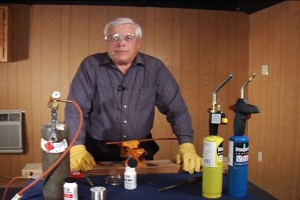
The university's HVAC infrastructure consists of what engineering supervisor George Tangeman calls a "hodge podge" of equipment. A majority of the campus's 90-plus buildings are served by a chilled water/steam plant, with about 10% using rooftop DX units. HVAC updates are ongoing and in the last few years, university officials acted upon the a recommendation from one of their suppliers to purchase an automated facility optimization tool.
Optimizing the Optimization Tool
The university's facilities staff at has been using the Optima™ System, an automated facility optimization tool from Aircuity, Inc., for nearly two years and, according to Tangeman, "It has changed our whole outlook on facilities management by teaching us to work smarter."In addition to timely complaint response, the system helps them create healthier environments, better manage cleaning services, and even improve designs for mechanical systems in new buildings.
The facilities department, which number 35 employees, uses the unit to service a wide range of buildings on the campus including classrooms, laboratories, and several rooms in the health care facility. The system has allowed the staff to respond to complaints such as dry eyes, scratchy throats, and odors; compare and optimize the performance of different HVAC systems in various buildings; and monitor construction.
Tangeman said the system has been especially useful for regulating temperature and responding quickly to IAQ complaints. Before using Optima, the university's Environmental Health Services (EHS) would be the first to respond to complaints. Depending on the situation, they might bring any number of separate sampling instruments to the site.
Test samples would be sent to a lab and it could take a week or more to obtain the results. Now, EHS refers each complaint to the facilities staff, who take the Optima monitor to the site. Typically, within one day the sampling is finished and a report is automatically generated. In many cases, by combining the report analysis with their knowledge of the building systems, facilities staff can quickly implement any corrective action.
Another useful application involves construction monitoring. A test will be run in an area prior to beginning reconstruction. Afterward, a second test will be conducted to verify the environment has improved. A record of all testing is kept in each "building vitals" file and can be referred to when designing new buildings.
"At one of our out clinics we were experiencing several complaints of scratchy throats and headaches," Tangeman said. "We put the machine in the general area where most of the complaints were coming from and left it in place for one full week, including two weekends, to get an overall feel for occupied and unoccupied times."
The results were, high CO and CO2 during the week and high CO every day. "The recommendation from the report said we needed more fresh air and to check all gas appliances for leakage, which we did." Tangeman and his staff discovered that the fresh air dampers were stuck in the closed position, and the gas-powered water heaters were starving for air. They also learned that there was a down draft in the chimney partially caused by an exhaust fan for the fume hood.
A New Perspective
Looking back, Tangeman said it seems "prehistoric" to have relied primarily on thermometers and a sense of smell for complaint response. The university's environmental health services is "ecstatic" with the Optima system because it frees up time otherwise spent dealing with routine complaint response."We use Optima as opposed to other methods because it is more economical and nullifies any psychological basis for the complaints." The machine is seen as an independent, unbiased source of data on air content. People put a lot of faith in the machine, more than any specialist. In fact, some people now ask for the monitor before making a complaint, he added. ES








